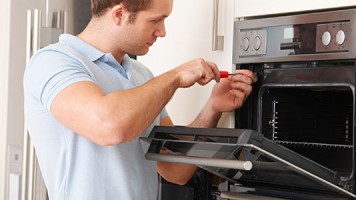Unit not cooling. Checked compressor relay/overload-Ok. Maybe board and thermister? Any help is appreciated.
- David Sutton asked 9 years ago
If the compressor is running check the Thermistors . If the thermisters chk out then go you may have a sealed system issue see diagnostics below. See videos on refrigerant leaks .We work on these all the time those main control boards are a big issue as well as low on Freon so check both but if the compressor is not running most likely it’s in your board there are two boards one in front of the unit display one in the back by the compressor left side it is very difficult to get to.
In the past we have changed the front display it works but end up going back and changing the back board as well
https://www.appliancevideo.com/?s=sealed+system&cat=&tag=&post_type%5B%5D=post&post_type%5B%5D=premiumvideos&post_type%5B%5D=fromthefield&post_type%5B%5D=embdvideo
The wine cellars, beverage centers, and refrigerated drawers utilize two thermistors: one is known as the evaporator
thermistor and the other as the display thermistor. Each thermistor has a different function for input to the electronic
control.
Evaporator thermistor (part number 41050057):
The evaporator themistor turns the unit on and off. It is secured to the evaporator or cabinet liner.
Display thermistor (part number 41050058):
The display thermistor is connected to the LED display and displays the temperature inside the unit on the display
panel.
The following will happen in the event of one or both thermistors fail:
1. If the evaporator thermistor fails, all loads will be shut off and the unit will not run.
2. If the evaporator thermistor senses temperature outside of 0-140 degrees F, all loads will be shut off and the
unit will not run.
3. The display panel will flash E3 for an evaporator thermistor failure and E4 for a display thermistor failure. If
both thermistors fail, the error codes will be displayed sequentially. An audible alarm will also sound six times
every minute if either one or both thermistors fails.
The thermistor can be checked by use of a multimeter with the ability to read resistance. To check the thermistor:
1. Disconnect and remove thermistor from unit.
2. Use a reference temperature point that is know (such as an ice bath) and measure the resistance across the
wire leads.
3. Compare the recorded resistance with Table C.
If measured resistance falls outside the resistance given in Table C within 4% of the value, the thermistor is bad and
will need to be replaced.
Table C: Resistance versus Temperature Chart
Temperature (C) Temperature (F) Resistance (K-OHMS)
If the thermistor has been tested and is found to be good, check the temperature of the evaporator plate and the
resistance of the thermistor. If the temperature of the evaporator plate does not correspond to a proper resistance
from the thermistor, check for a proper and secure connection of the thermistor to the evaporator plate bracket.
12
Use a leak detection system that will detect R-134a refrigerant. Leaks need to be found on any leaking system
BEFORE the repair takes place.
2. The drier must be replaced anytime the sealed system is opened. Always use a MARVEL drier. Failure to do so
may cause repeated system failure in the future.
3. Limit time the system is opened. DO NOT EXPOSE THE OPEN SYSTEM FOR MORE THAN 15 MINUTES. This
will result in sealed system failure. Leave replacement parts sealed and/or pressurized until ready to install.
4. The compressor must be replaced if there is a low side leak. Moisture has been drawn into the system if the
unit has been running for an extended period of time. Be sure to flush the system with dry nitrogen gas and
evacuate to 50 microns before re-charging (see Section 2.2, Low Side Leaks).
5. A new evaporator assembly must be ordered if the capillary tube is found to be plugged or severely restricted.
Restrictions cannot be flushed out.
6. Be sure to purge the system with dry nitrogen gas after final brazing. This will flush out any air or moisture that
may have entered the system before being absorbed into the ester oil.
2.2 Low Side leaks
Low side leaks consist of a break in the system at the evaporator, low side (suction) return line, or accumulator. If a
leak is found in any of these areas, moisture has probably entered the system. The compressor and drier will have
to be replaced and the system will need to be flushed thoroughly with nitrogen gas and evacuated to 50 microns
before re-charging.
2.3 High Side Leaks
High side leaks consist of a break in the system at the condenser, high side tubing, drier, or capillary tube. If a
leak is found in any of these areas, the system can be flushed with nitrogen gas, evacuated to 50 microns, and recharged.
2.4 Restricted Capillary Tube
Moisture or other contaminants that enter the system can cause deposits in the system. These deposits will usually
collect in the capillary tube and form a restriction that cannot be completely removed by flushing. If the capillary
tube is found to be restricted, the evaporator, compressor, condenser, and drier should all be replaced.
2.5 Access Valves
A temporary access valve can be used to service or evaluate the system. From these access valves, you can evacuate,
charge, and recover the system. The access valve can be installed on the compressor’s process tube (this will
also be a low pressure side). Be sure to cap off access valve while servicing. This will prevent contamination of
the sytem and/or refrigerant from leaking. After servicing, the access valve should be removed. A pinch-off tool
can be used to close the system to remove the access valve and then braze the hole for the access valve to seal the
system. Be sure to leak check after brazing.
3
- AV Repair Help answered 9 years ago
- last edited 9 years ago
- You must login to reply
Please login first to submit.


